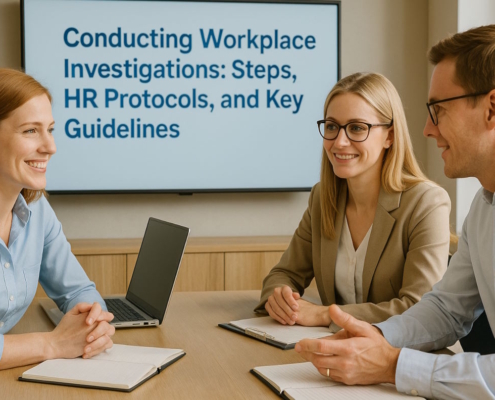What types of discrimination under EEOC are the most common and why?
The EEOC enforces federal laws that make it illegal to discriminate against an individual for the following reasons:
- Race
- Color
- Religion
- Sex
- National origin
- Age
- Disability
- Genetic information
Also, it is unlawful to discriminate against an individual who files a complaint regarding the discrimination or has otherwise engaged in an employment discrimination lawsuit or investigation. In 2020, about 56% of charges filed with the EEOC related to retaliation.
What Is the EEOC’s Authority and Role?
The EEOC is granted the power to investigate any charges of discrimination levied against employers. Employers are typically subject to EEOC laws if they have at least fifteen employees. A number of labor unions and employment agencies are under its authority as well.
The EEOC is meant to fairly look into allegations and make a finding. If the agency determines that unlawful discrimination had occurred, then it will attempt to settle the charge. The agency also has the power to file a lawsuit to protect certain individuals, as well as the public interest.
EEOC laws apply to all kinds of workplace situations, functions, and processes. This would include the hiring and terminating of employees, harassment, job training, promotions, benefits, and wages. The EEOC is also supposed to prevent discrimination before it happens.
What Is the Federal Sector EEO Complaint Process?
The law protects federal employees and job applicants from discrimination because of race, color, national origin, sex (including sexual orientation, gender identity, and pregnancy), age (40 and older), disability, and genetic information. The law also protects an individual from retaliation if they oppose employment discrimination, file a complaint regarding harassment or discrimination, or engage in the EEO complaint process.
In addition, there are federal laws and regulations, as well as Executive Orders (not enforced by the EEOC) that forbid discrimination on the basis of sexual orientation, parental status, marital status, or political affiliation.
If a federal employee or job applicant believes that he or she has been discriminated against by a federal agency, then they have the right to file a complaint. Every agency must post information regarding how to contact the agency’s EEO office. An individual may contact an EEO Counselor by calling the office in charge of the agency’s EEO complaints program.
What Is the Role of an EEO Counselor?
The first step an individual should take is to contact an EEO counselor where he or she works or where he or she applied for a job. In general, an individual should contact the EEO counselor within 45 days from when the discriminatory incident occurred.
Typically, the EEO counselor will grant an individual the ability to participate either in EEO counseling or in an alternative dispute resolution (ADR) program. This might include a mediation program.
If an individual is not able to settle the dispute during counseling or through ADR, then he or she can file a formal discrimination complaint against the agency via the relevant EEO office. An individual needs to file within 15 days from the day he or she received the notice from their EEO counselor regarding how to file.
How to File a Formal Complaint
After an individual has filed a formal complaint, the agency will review the submitted complaint to figure out whether the case is legitimate or should be dismissed for some kind of procedural reason (such as the claim being filed too late).
If the agency does not throw out the complaint, then it will perform an investigation. The agency has 180 days from the date the individual filed the complaint to complete the investigation.
Once the investigation has been completed, the agency will provide a notice that gives an individual two options:
- Request a hearing in front of an EEOC Administrative Judge
- Ask the agency to provide a decision regarding whether discrimination happened
What Happens When the Agency Issues a Decision
If an individual requests that the agency provide a decision and no discrimination has been identified, or if the individual disagrees with an element of the decision, he or she can appeal the case to EEOC or challenge it in federal district court.
Requesting an EEOC Hearing
If an individual wishes to request a hearing, he or she needs to make their request in writing or through the EEOC Public Portal, where an individual may upload hearing requests and manage their representative and personal information. They may fill out this information within 30 days from the date when they received the notice from the agency regarding their hearing rights. If an individual requests a hearing, then an EEOC Administrative Judge will hold the hearing, make a decision, and order relief if it is determined that there has been discrimination.
After the agency has received the Administrative Judge’s decision on the case, the agency will provide what is known as a final order. This will inform the individual whether the EEOC agrees with the Administrative Judge and whether it will provide any of the relief the judge ordered. The agency has 40 days to issue this final order. The order will also have information regarding the right to appeal to EEOC, as well as an individual’s right to file a civil action in federal district court. Also, the order will provide a deadline for filing either an appeal or civil action.
Filing an Appeal of the EEOC’s Final Order
An individual has the right to appeal an agency’s final decision, including one that dismissed a complaint. This may be reported to the EEOC Office of Federal Operations. An individual needs to file their appeal within 30 days of receiving the judgment. An individual may file the appeal using the EEOC’s Public Portal. There, he or she may also upload various documents, as well as manage representative and personal information.
Then, EEOC appellate attorneys will review the applicant’s file, including the agency’s previous investigation, the Administrative Judge’s decision, a transcript of what was said at the hearing (if applicable), as well as any appeal statements.
If the agency finds fault with any element of the Administrative Judge’s decision, then it will appeal to EEOC.
Request for Reconsideration of the Appeal Decision
If an individual does not agree with the EEOC’s decision regarding their appeal, then they may ask for a reconsideration of the decision. A request for reconsideration may only be issued if an individual can prove that the decision is based on an error about the facts of the case of the law that was used to interpret the case. An individual must ask for reconsideration within 30 days of getting the decision on their appeal.
After the EEOC has ruled on the appeal, the agency has the ability to ask the EEOC to rethink the decision.
After a decision has been made regarding the request for reconsideration, there is no further recourse. The issued decision in this case is final.
Filing a Discrimination Lawsuit
An individual needs to go through the administrative complaint process prior to filing a lawsuit. There are a number of different points during this process when an individual has the chance to get out of the process and file a lawsuit in court. These times include the following:
- After 180 days have elapsed from the date the complaint was filed (if the agency has not issued a decision and no appeal has been filed)
- Within 90 days from the date an individual receives the agency’s decision on the complaint (as long as an appeal has not been filed)
- After the 180 days from the date an individual filed their appeal if the EEOC did not offer a decision
- Within 90 days from the date an individual received the EEOC’s decision on the appeal
































